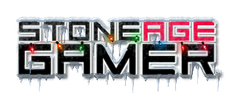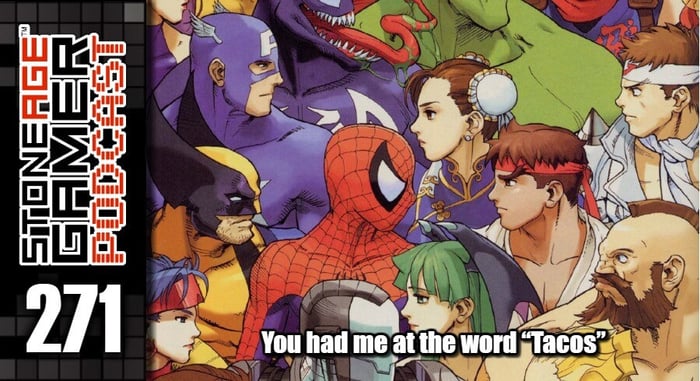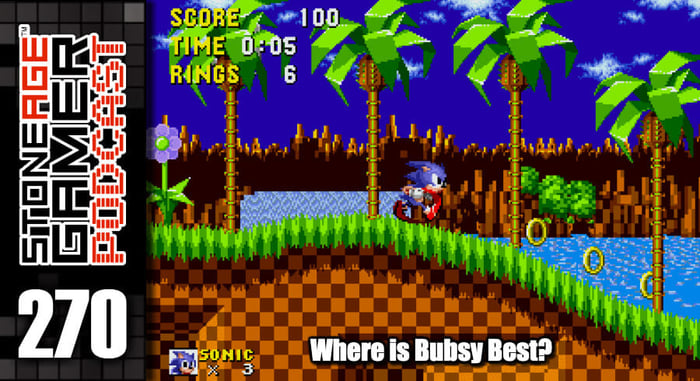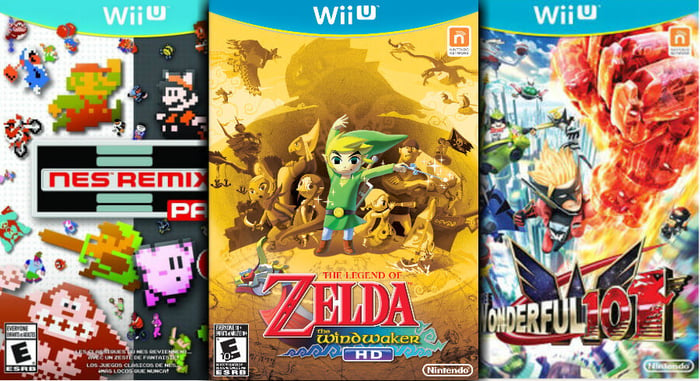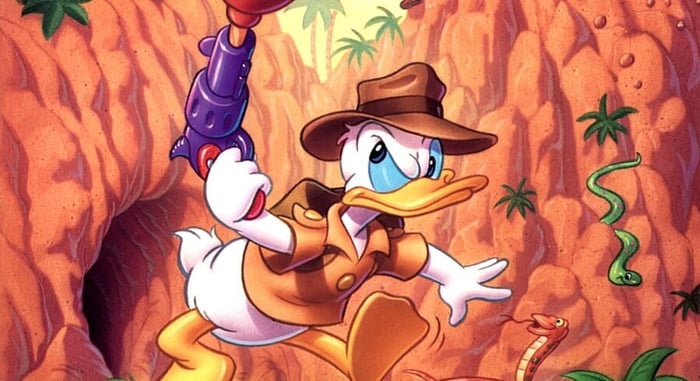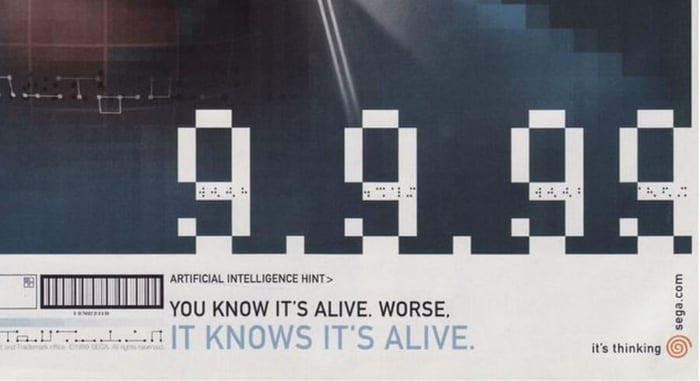
What Dreams are Made Of
The Dreamcast turned 20 this week, and looking back on it, its launch was one of my absolute favorite times in video game history. It wasn’t flawless, and its game library pales in comparison to the other consoles of its generation, but that doesn’t make the Dreamcast any less magical. And that’s what it was, pure magic from beginning to end.
The 32/64-bit generation of games is without a doubt my least favorite of all time. It was necessary to get us to where we are now, but those awkward, blurry, jaggy years were just gross, at least to me. I started gaming back on the Atari 2600 so I’m no stranger to graphics that don’t exactly look like what they’re supposed to represent, but there was and still is a certain degree of charm to those blocky images. I can still look at Yars’ Revenge and appreciate the artistry there, but even something as utterly brilliant as Tony Hawk’s Pro Skater on PSX is really hard for me to look at. Every generational upgrade after the Atari era was a sight to behold. Pitfall gave way to Super Mario Bros. Super Mario Bros to Super Mario World. Even Super Mario World to Super Mario 64 was something, but Super Mario 64 stands as one of very few exceptions to my rule of being genuinely turned off by most of what that generation had to offer. By the time the Super NES and Genesis were reaching their peak we were playing stuff like Super Metroid, Sonic 3 & Knuckles, Donkey Kong Country, and Chrono Trigger. When the Playstation and Saturn came along, it was like games went back to the Atari age of expression. Sure, you could tell what you were supposed to be looking at, but it was UGLY. It wasn’t just the visuals either, as everyone was still learning how to make games work in 3D. The transition was brutal for franchises like Castlevania, Street Fighter, and Contra. Again, it was necessary, but it didn't make those games any easier to look at. Castlevania: Symphony of the Night, Mischief Makers, and any other of the extremely occasional 2D games utilizing the power of modern consoles stood as painful reminders of what the future of gaming could have been had more companies decided to keep evolving 2D gaming with what the newest technology could bring to a sprite based experience, but the march of technology is unstoppable. Polygons were the future.
Then one day, I was working at FuncoLand and a magical VHS tape made its way into my store. They used to send us these tapes of game trailers, and it was one of the happiest days for me when they would show. This was before the days of YouTube, so seeing actual gameplay of new games was still pretty special. This was where I got my first glimpse of the Dreamcast in action, and this was where I fell back in love with the future of video games. I couldn’t believe my eyes! The games on this reel didn’t look like garbage anymore. They looked like what they were supposed to look like. Gone were the super pixelated textures wrapped around pointy polygons. If this was where the future of gaming was heading, I wanted to be on board. My Dreamcast hype was officially kicked into gear, and we all spread that love to every customer who came into the store.
There were three things on that tape that absolutely slayed people when we showed them off. Sonic Adventure, NFL 2K, and Shenmue. No lie, people would come into the store while NFL 2K was on and think we were just watching football. When we told them it was a game, they couldn’t believe their eyes. Looking at a screenshot of the original NFL 2K now it’s hard to imagine that actually happening, but if you put that game running on a small-ish CRT and only caught a quick glance, you could absolutely still mistake it for the real thing. After spending time with stuff like Turok 2: Seeds of Evil, it was nice to be truly impressed with a game’s graphics again. Those generational jumps were always the coolest things to see, but after Mario 64, nothing from that era really impressed the way the jump from Atari to NES or NES to SNES did. Ocarina of Time and Metal Gear Solid stand the test of time pretty well, but even those powerhouses look almost comically bad when you look at them today. Dreamcast games though, they look fantastic. Maybe not quite as fantastic as I remember, but fantastic nonetheless.
A few weeks before the 9.9.99 launch, we got an actual Dreamcast demo unit for our store and that thing got put through its paces QUICK. We just got the unit, no big standee thing or anything, and we were supposed to hook it up to our GXTV, which sat at the end of the counter toward the front of the store. There was a constant crowd around the thing. As impressive as that video was, it was nothing compared to how the Dreamcast looked hooked up to that little TV. We got a demo for Sonic Adventure and Ready 2 Rumble boxing. That freaking whale in the Sonic Adventure demo was such a showstopper, but I think what caught people more than anything was the way Ready 2 Rumble animated. That game moves so well, and it still looks better than half the wrestling games made today. It was pretty fun, too. Then the Soul Calibur demo showed up and it was all over. I can’t even remember which characters were unlocked in that demo, but I know we all used to stay after work for hours playing that game. Seriously, after every shift we’d just sit there for 2-3 extra hours just playing Soul Calibur over and over. Dreamcast hype was on overload.
Launching on 9.9.99 for $199.99 was such a genius move, and its launch lineup was positively insane. I don’t think there’s been a console launch with this many great games since. On day one, customers could buy AeroWings, Airforce Delta, Blue Stinger, Flag to Flag CART racing, Expendable, House of the Dead 2, Hydro Thunder, Monaco Grand Prix, Mortal Kombat Gold, NFL 2K, NFL Blitz 2000, Pen Pen Triceleon, Power Stone, Ready 2 Rumble Boxing, Sonic Adventure, Soul Calibur, TNN Motorsports HardCore Heat, Tokyo Xtreme Racer, and Trickstyle. By the end of the month, Jeremy McGrath Supercross 2000, King of Fighters: Dream Match 1999, Marvel vs. Capcom, Sega Bass Fishing, Time Stalkers, and Toy Commander were available too, with stuff like Virtua Fighter 3tb, Sega Rally Championship 2, NBA 2K, NHL 2K, Shenmue, and Crazy Taxi all on the horizon. That system’s launch day was one of the most fun days I have ever worked in my life. There was a giant crowd at the store, and every person there was just so happy to get their system and go play it. People were standing around futzing with tier new VMUs, talking about which games they were going to get, it was just pure awesome fun all around. I personally picked up a second controller, a VMU, Sonic Adventure, Soul Calibur, House of the Dead 2, and 2 light guns on day one.
Now, compare that to the PlayStation 2 launch, which was one of the most dour days in gaming I was ever involved with. There were so few units available that my store only got 3, and two of the people who bought them didn’t even want them. They were just buying them to sell off at a higher price. The launch games were pitiful with most people picking up their system for the first time looking at the selection and saying “I don’t know, Madden and… Tekken? Sure.” But that was the PS2 for you (at least at launch. That system turned things around big time, but its start was, well, a story for another time). And that was what, at least from what I could see, killed the Dreamcast. Not a killer game from a competitor, just hype.
As the Dreamcsat enjoyed its time as the hot new system in town, there was a storm brewing. A storm called PlayStation 2. The PlayStation brand was beyond huge, toppling even Nintendo and absolutely owning the video game market. There were huge promises being made about its graphical power, its inevitable games and backward compatibility, and of course, its DVD playback functionality. There wasn’t even anything tangible to be hyped about, just the name and the promise of it being even more PlayStation, but better. The PS2’s hype was unbelievable, and that hype alone killed the Dreamcast. It didn’t even need any games to do it. I can’t tell you how many customers told me they weren’t interested in the Dreamcast because the PS2 was coming out. They didn’t know what games they were going to play, and they didn’t care. They just knew they needed PS2, end of story.
Of course, the Dreamcast’s library probably didn’t help things. As strong as things were for Dreamcast on launch day, 3rd party support wasn’t as strong as it could have been thanks in no small part to Sony’s death grip on the industry at the time. That isn’t to say that the library was bad, just different. If you were a fighting game fan, the Dreamcast was pretty much the perfect console, albeit with a controller that was uniquely terrible for fighting games, but whatever. Dreamcast played host to Street Fighter III: Double Impact and Third Strike, Street Fighter Alpha 3, Soul Calibur, Virtua Fighter 3tb, Marvel vs. Capcom 1&2, Plasma Sword, Project Justice, Power Stone 1&2, and more. It wasn’t just fighting games either. I can’t begin to tell you how many hours my friends played multiplayer Toy Commander, a terribly underrated game on the platform. Legacy of Kain: Soul Reaver looked and played better on Dreamcast than anywhere else, Resident Evil: Code Veronica was the first RE game I put any real time into, and Ecco the Dolphin: Defender of the Future was positively stunning to look at. Still, the biggest games of the time weren’t on Dreamcast, and they weren’t on their way either. EA wouldn’t touch the system, meaning Madden was perpetually a no-show. I know Madden isn’t on Switch and it’s doing just fine, but Madden was a different beast back then. Even the spectacular NFL 2K wasn’t enough to sway the overall gaming public to abandon John Madden’s dulcet tones. Square-Enix was really tight with Sony, so Final Fantasy wouldn’t be coming to Dreamcast no matter how much people liked JRPGs on the platform. Konami showed some support, but steered clear of putting big franchises like Metal Gear and Silent Hill on Dreamcast. It was shockingly bleak.
Sega tried to fill in the gaps, but it didn’t take too long for their biggest releases to be, well, pretty freaking weird. Really great in most instances, but not exactly the kinds of games that the mainstream gamer was all that interested in. Chu Chu Rocket, Seaman, Jet Grind Radio, Typing of the Dead, this stuff was all brilliant, but it wasn’t enough to carry the system. Even more mainstream fare like Phantsy Star Online, Skies of Arcadia, and D2 were few and far between. In 2001, Sega announced that they were going third party, and the Dreamcast was effectively dead.
I loved my Dreamcast dearly, and it’s always bummed me out how quickly its fortune turned. There were so many interesting things happening on the platform, and while it really couldn’t compete with the PS2, GameCube, and Xbox on a raw power level, it had plenty of potential to be more than it was. There’s little denying the move to 3rd party was the right move for Sega, but after the 32X and Saturn, it was nice to see Sega on top of the console wars for a while. The Dreamcast showed me that video games could be beautiful again, and that for every Tomb Raider and Medal of Honor out there that I had no interest in playing, there were still companies out there cranking out weird stuff like Space Channel 5 and the simple brilliance of Virtua Tennis. That little console will always hold a special place in my heart, and on my gaming shelf. Long live the Dreamcast!
